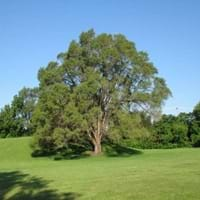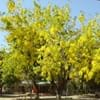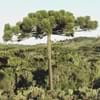Life Span
Perennial
Perennial
Origin
Asia
Hybrid origin
Types
Not Available
Victoria Rhubarb
Colorado Red Rhubarb
Turkish Rhubarb
Number of Varieties
Not Available
Habitat
Woodland Garden Canopy
gardens, Grassland, Humid climates, Tropical regions, Urban areas
USDA Hardiness Zone
2-9
5-8
Sunset Zone
A1, A2, A3, 1a, 1b, 2a, 2b, 3a, 3b, 4, 5, 6, 7, 8, 9, 10, 11, 14, 15, 16, 17, 18, 19, 20, 21
2b, 3a, 3b, 4, 5, 6, 7, 14, 15, 16, 17
Habit
Upright/Erect
Clump-Forming
Minimum Height
Not Available
Minimum Width
Not Available
Flower Color
Not Available
Light Pink
Flower Color Modifier
Bicolor
Not Available
Fruit Color
Green, Tan
Burgundy
Leaf Color in Spring
Dark Green
Green, Dark Red
Leaf Color in Summer
Dark Green
Green, Dark Red
Leaf Color in Fall
Dark Green
Green, Dark Red
Leaf Color in Winter
Not Available
Light Green
Leaf Shape
Elliptic
Compound
Plant Season
Summer
Spring, Summer, Fall
Sunlight
Full Sun
Full Sun, Partial Sun
Growth Rate
Very Fast
Medium
Type of Soil
Clay, Loam, Sand
Clay, Loam
The pH of Soil
Acidic, Neutral, Alkaline
Acidic, Neutral, Alkaline
Soil Drainage
Average
Average
Bloom Time
Spring
Summer, Late Summer
Tolerances
Pollution, Drought
Drought
Where to Plant?
Ground
Ground
How to Plant?
Seedlings
Stem Planting
Plant Maintenance
Medium
Medium
Watering Requirements
Do Not over Water, Needs watering once a week
Do Not over Water, Requires regular watering, Use Mulches to help prevent water loss during hot and windy weather, Water Deeply
In Summer
Lots of watering
Lots of watering
In Spring
Moderate
Moderate
In Winter
Average Water
Average Water
Soil pH
Acidic, Neutral, Alkaline
Acidic, Neutral, Alkaline
Soil Type
Clay, Loam, Sand
Clay, Loam
Soil Drainage Capacity
Average
Average
Sun Exposure
Full Sun
Full Sun, Partial Sun
Pruning
Remove diseased branches by the tool's blades dipped into the alcohol solution
Remove damaged leaves, Remove dead branches, Remove dead leaves
Fertilizers
20-5-10 fertilizer
All-Purpose Liquid Fertilizer
Pests and Diseases
Aphids, Leaf spot, Powdery mildew
Red blotch
Plant Tolerance
Drought
Drought
Flowers
Insignificant
Showy
Flower Petal Number
Not Available
Not Available
Foliage Texture
Medium
Coarse
Foliage Sheen
Matte
Glossy
Attracts
Insects, Not Available
Not Available
Allergy
Mild Allergen
Skin irritation
Aesthetic Uses
Bonsai
Showy Purposes
Beauty Benefits
Not Available
Not Available
Environmental Uses
Air purification
Air purification
Medicinal Uses
Antibilious, Antidote, Demulcent, Diuretic, Febrifuge, Poultice
Not Available
Part of Plant Used
Fruits, Inner Bark, Leaves
Whole plant
Other Uses
Inner bark can be dried and made into noodles, Sauces, Sometimes used for making wine, Used as a potherb, Wood used for boat making
Culinary use, Used as Ornamental plant
Used As Indoor Plant
No
No
Used As Outdoor Plant
Yes
Yes
Garden Design
Shade Trees
Feature Plant, Mixed Border
Botanical Name
ULMUS pumila
RHEUM 'Ace of Hearts'
Common Name
Siberian Elm
Ace of Hearts Ornamental Rhubarb, Ornamental Rhubarb
In Hindi
Siberian Elm
सजावटी प्रकार का फल
In German
Siberian Elm
Ornamental Rhabarber
In French
Siberian Elm
rhubarbe ornementale
In Spanish
Siberiano Elm
Ornamental de ruibarbo
In Greek
Σιβηρίας Elm
καλλωπιστικά Ραβέντι
In Portuguese
Siberian Elm
ornamental ruibarbo
In Polish
Siberian Elm
ozdobne Rabarbar
In Latin
Siberian Elm
decentius Rhubarb
Phylum
Magnoliophyta
Tracheophyta
Class
Magnoliopsida
Not Available
Order
Urticales
Caryophyllales
Family
Ulmaceae
Polygonaceae
Clade
Angiosperms, Eudicots, Rosids
Angiosperms, Core eudicots, Eudicots
Tribe
Not Available
Not Available
Subfamily
Not Available
Not Available
Number of Species
Not Available
Season and Care of Siberian Elm and Ornamental Rhubarb
Season and care of Siberian Elm and Ornamental Rhubarb is important to know. While considering everything about Siberian Elm and Ornamental Rhubarb Care, growing season is an essential factor. Siberian Elm season is Summer and Ornamental Rhubarb season is Summer. The type of soil for Siberian Elm is Clay, Loam, Sand and for Ornamental Rhubarb is Clay, Loam while the PH of soil for Siberian Elm is Acidic, Neutral, Alkaline and for Ornamental Rhubarb is Acidic, Neutral, Alkaline.
Siberian Elm and Ornamental Rhubarb Physical Information
Siberian Elm and Ornamental Rhubarb physical information is very important for comparison. Siberian Elm height is Not Available and width Not Available whereas Ornamental Rhubarb height is 71.10 cm and width 81.30 cm. The color specification of Siberian Elm and Ornamental Rhubarb are as follows:
Siberian Elm flower color: Not Available
Siberian Elm leaf color: Dark Green
Ornamental Rhubarb flower color: Light Pink
- Ornamental Rhubarb leaf color: Green and Dark Red
Care of Siberian Elm and Ornamental Rhubarb
Care of Siberian Elm and Ornamental Rhubarb include pruning, fertilizers, watering etc. Siberian Elm pruning is done Remove diseased branches by the tool's blades dipped into the alcohol solution and Ornamental Rhubarb pruning is done Remove damaged leaves, Remove dead branches and Remove dead leaves. In summer Siberian Elm needs Lots of watering and in winter, it needs Average Water. Whereas, in summer Ornamental Rhubarb needs Lots of watering and in winter, it needs Average Water.





